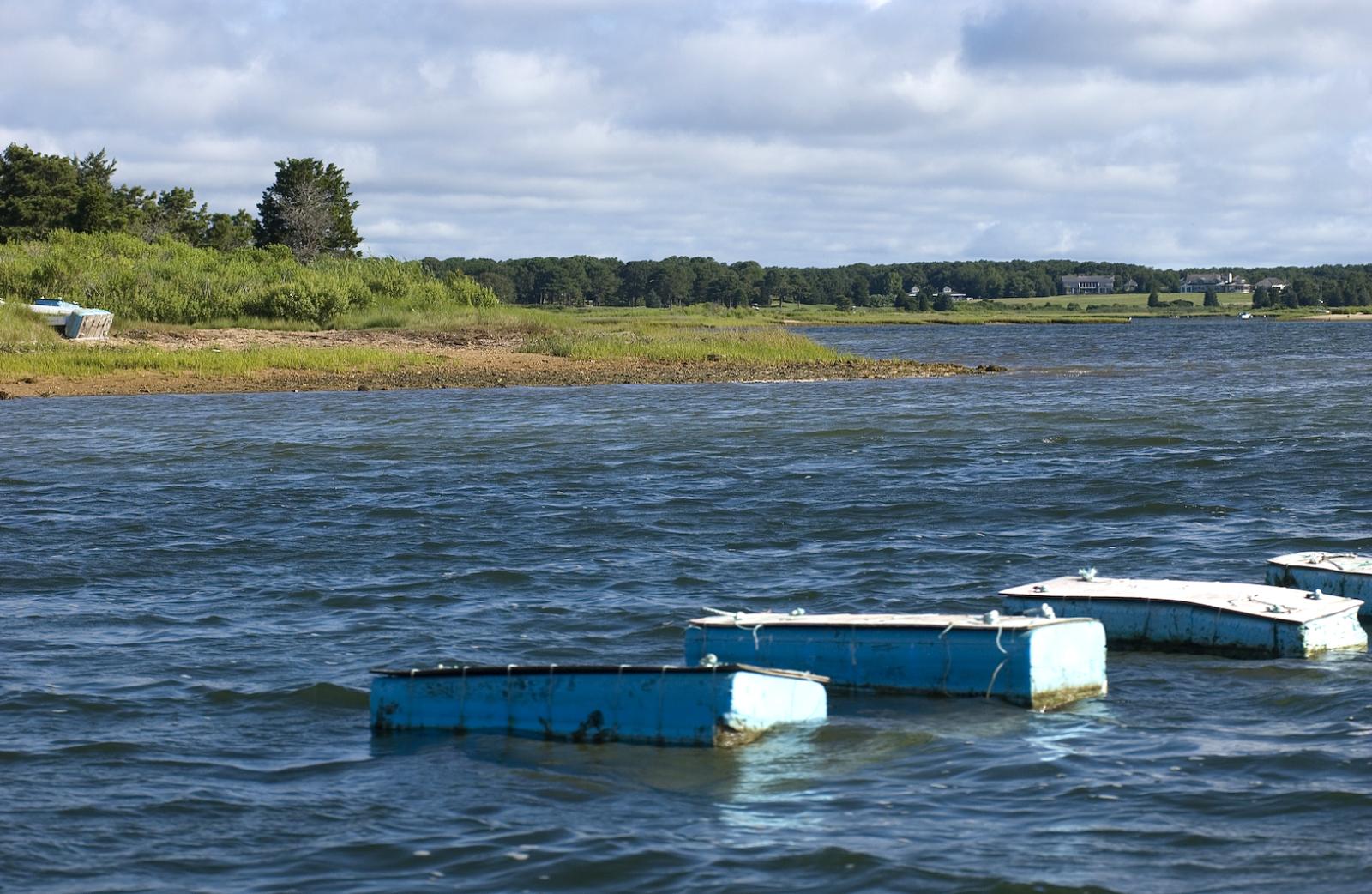On Tuesday morning, before most Islanders had their first cup of coffee, volunteers took a walk around Sengekontacket Pond looking for sources of pollution.
Carrying clipboards and cameras, the volunteers did a coastal shoreline survey, looking for anything that might signal a cause for the declining water quality in the 745-acre pond.
The walk at low tide was organized by participants in a new collaboration between Oak Bluffs and Edgartown residents and town officials. They share a common concern about the future health of the pond and want to do something about it.
A coastal shoreline survey is a key step in identifying unwanted pollutants that are getting into the pond.
“Last summer when the state Division of Marine Fisheries closed Sengekontacket Pond to shellfishing because of water contamination, I suggested we have a joint meeting of the selectmen from the two towns to talk about the issue,” said Duncan Ross, Oak Bluffs selectman and chairman of the newly formed Joint Committee on Sengekontacket.
“We discovered at that meeting it was obvious that we weren’t going to solve the problems at that one meeting,” Mr. Ross said.
Out of that meeting, the committee was formed. Participants include the shellfish department, conservation commission and boards of health in Edgartown and Oak Bluffs, interested citizens, the Martha’s Vineyard Shellfish Group, Felix Neck Wildlife Sanctuary and members of the Friends of Sengekontacket.
“This summer the state automatically closed the pond to shellfishing,” Mr. Ross said. “If we want to open the pond again, we have to identify the sources of the contamination and deal with it.”
Sengekontacket Pond already gets plenty of attention. One of the oldest environmental pond organizations on the Island, the Friends of Sengekontacket, have worked for years on finding ways to raise public awareness about the pond and put support behind projects that help Sengekontacket.
Twenty years ago the nonprofit organization helped the towns of Edgartown and Oak Bluffs do a dredging project in the pond. By increasing water circulation by dredging a channel, they hoped to improve water quality, nurture a declining shellfish population and put much-needed sand onto overly eroded areas of the Joseph A. Sylvia State Beach.
Earlier this week, Terry Appenzeller, a member of the new committee and treasurer, described the basis of the shoreline survey.
She said the shoreline of Sengekontacket was broken up to 15 stations consisting of half-mile segments. “The Martha’s Vineyard Commission gave us a map and we divided it into a grid,” she said.
Three of the stations, at Felix Neck Wildlife Sanctuary, were surveyed by teenage campers with the Fern and Feather program at the sanctuary.
On Tuesday morning, four boat teams and eight groups of walkers walked the complete pond. Ms. Appenzeller said the work took about an hour to complete. The data was delivered and collated by Suzan Bellincampi, director of Felix Neck Wildlife Sanctuary.
Mr. Ross said it is widely known within the committee that the pond’s affliction with bacteria comes from a number of sources, including people, pets and birds. A large population of cormorants nests on Sarson’s Island.
Standing on the leeside of Sarson’s Island, one can smell a strong odor of ammonia, said Danielle Ewart of the Oak Bluffs shellfish department.
Bill Wilcox, water resource planner for the Martha’s Vineyard Commission, has taken water samples for years in many of the Island’s coastal ponds.
“Sengekontacket Pond is in the middle of the pack as far as water quality is concerned,” Mr. Wilcox said. “There are ponds that are more restricted like Tisbury and Edgartown Great Ponds. Squibnocket and the great ponds have a more eutrophic conditions than Senge. Senge is probably in a similar category as Lagoon and the southern half of Lake Tashmoo. They have excessive growth of plant materials which is related to nitrogen.”
The last formal water survey of Sengekontacket Pond came in 1999, when the federal government mandated states to do sanitary surveys of ponds with harvestable shellfish.
The next survey scheduled by the state is in the year 2011, or 12 years after the first. But to monitor the health of the pond, Ms. Appenzeller said, the committee needs to do its own survey.
David Grunden, shellfish constable for Oak Bluffs, said: “This year we are continuing to collect the same nutrient information from the ponds that Bill has collected for years. Every week we go out to take water samples at eight specific sites and have it analyzed.”
What is different is the degree of testing under way.
Mr. Grunden said the work involves analyzing the bacteria load and what kind of animals are creating the bacteria.
“We are finding out what animal left it, human, bird or muskrat. We want to know who the larger contributors are and develop a way to address that.”
Funding for the water sampling is coming from both towns and private donations.
When it comes to priorities, Mr. Grunden said: “Getting Sengekontacket Pond open in the summer for shellfishing is a very high priority.”
The survey and water sampling is just a part of a larger project.
Ms. Appenzeller said that in the days ahead a mailing will be done to all residents of the Sengekontacket Pond watershed. Brochures have been printed to alert people that there are positive steps every homeowner can take over time which will have a positive impact on keeping pollutants down in the waters of Sengekontacket Pond. They’ve also printed posters that read, Save Senge.
More information about the efforts to help the pond is available by visiting sengekontacket.org.




Comments
Comment policy »